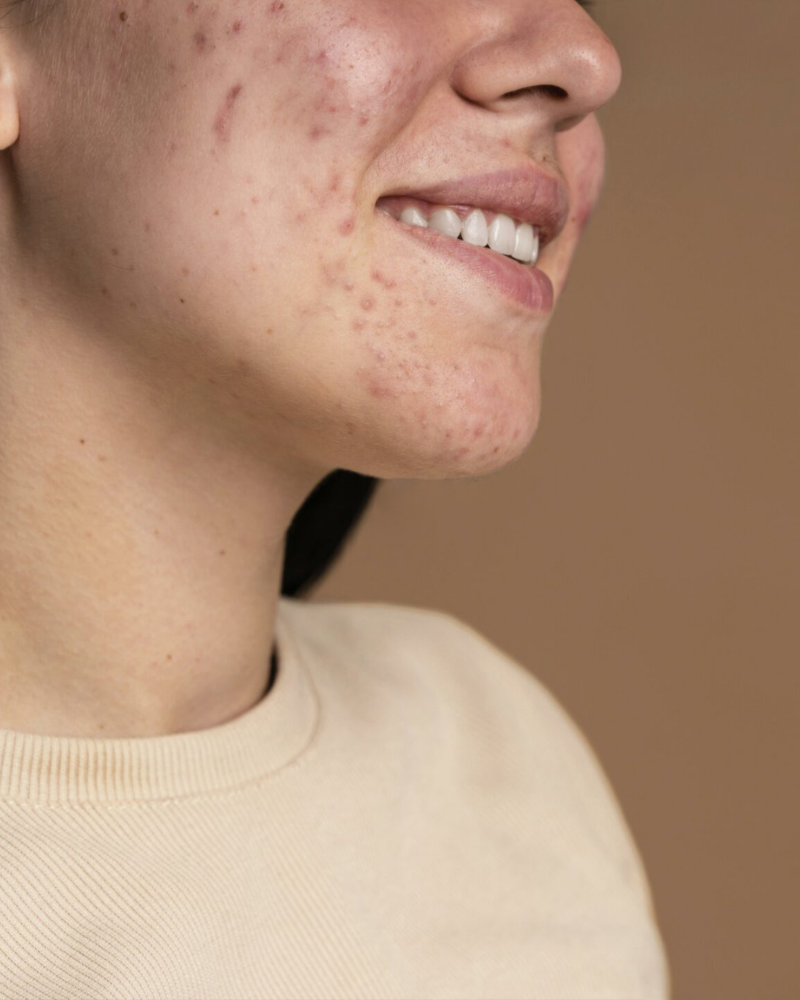Acne is often associated with teenagers and puberty; however, it will actually affect up to 85% of people at some point in their life. It is also often associated with oily skin, but again this is not always the case as many factors can contribute to the condition.

Acne is an inflammatory condition. The sebaceous glands we have on our face, back and chest are larger and in a higher concentration than anywhere else on our bodies. It is these glands that create sebum (oil) and can become inflamed.
The oil created naturally travels up the hair follicle in the skin and onto the surface. Once on the surface, it contributes to the micro flora, waterproofs the skin, and helps the skin be resistant to microorganisms.
P.acnes, which is a friendly bacteria, is present both in the hair follicle and on the skin’s surface. This bacterium feeds on the oil produced, creating a change to the triglyceride component (a type of fat) of the oil. This then results in free fatty acids and creates the natural PH balance of the skin.
However, an excess of these free fatty acids can cause inflammation.
factors that can cause acne
-
excess keratinisation
If dead cells are not exfoliated from the skin’s surface, they can cause the hair follicle to become blocked. The oil will then not be able to reach the skins surface. The P.acnes bacteria present in the follicle will continue to feed on the oil being produced, resulting in inflammation and pus within the pore. This type of acne spot is called a pustule.
-
hormones
Hormonal changes and sensitivity play a huge role in acne. Hormones can cause excess oil to be produced and this will often be thicker or stickier than normal. The change in the oil’s consistency can make it difficult for the oil to travel up the hair follicle to reach the skin’s surface. Mix this scenario with dead skin cells and a blockage in the follicle can occur.
-
medication
Some medications, such as the contraceptive pill, can cause a change in hormone levels. Other medications change the PH and micro flora balances of the skin. Either of these changes can cause inflammation due to microorganisms entering the skin and/or excess keratinisation.
grades of acne
Open and closed (blackheads) comedones usually in the t-zone area of the face and possibly excess oil production. No inflammation will be present.
Open and closed comedones, with some papules and pustules (spots with or without yellow/white centres).
Papules and pustules across the t-zone and cheeks of the face. These spots may also be present on the chest and back at this grade.
Comedones, papules and pustules over the entire face with high inflammation levels. The condition may also be present on the chest and back. There may also be painful nodules and sometimes cysts.
At grade 5, the condition will be highly inflamed and chronic in all areas. Nodules and cysts will also be present on the face, chest and back.
